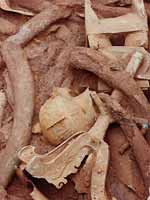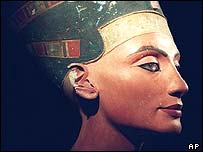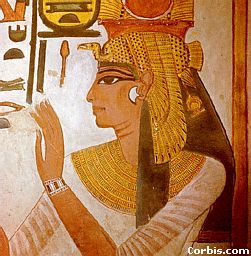
 |
|
|
|
|
| Rwandans party after win Uganda's coach says witchcraft confused his players Rwandans celebrated overnight after beating rivals Uganda 1-0 in an African Nations Cup qualifying match. Ugandans claimed that the Rwandan goalkeeper used witchcraft during the match played in the Ugandan capital, Kampala.  About 10,000 people assembled at Kigali airport at 0100 local time (2300) on Sunday morning to receive the victorious Rwandan Wasps. They included President Paul Kagame and Prime Minister Bernard Makuza. Political victory Relations between Rwanda and Uganda have been strained in recent years over the war in the Democratic Republic of Congo. The two former allies have clashed on several occasions on Congolese territory during the five-year DR Congo conflict, near the town of Kisangani. I am still shocked by this witchcraft that I witnessed for the first time in my football career Ugandan coach Pedro Pablo Pasculli From the airport the national football team, led by chanting and dancing supporters, matched to Amahoro national stadium. On the way they used loud speakers to share their joy with those who remained indoors. At the Amahoro stadium President Kagame addressed the excited crowd. A BBC reporter in Kigali, Ismail Misigaro, says most Rwandans regard the win against Uganda as a political victory. |
He says fans who joined the procession along the streets of the capital, Kigali, described the victory as
"Kisangani phase two". In Kampala, BBC reporter Jackson Oryada says the African Nations Cup qualifying match was marred by chaos and fighting over the alleged use of witchcraft. Shock |
|
Site for Ancient Sacrifice Found in West China Province Chinese archaeologists have unearthed a pit believed to be used for ancient ritual sacrifice at the largest and best-preserved primitive village in China. The pit was discovered at the new Banpo Site Museum, and alterations will be made to protect the site. Named Jisikeng, the pit is expected to reveal the sacrifice activity of the Banpo people who lived 5,000 years ago. It has been dug out beneath the planned new site's eastern wall, two meters lower than the horizontal floor. A columnar stone object 70 centimeters high, buried to a depth of 20 centimeters, was found standing at the center of the pit. |
 Another two smaller pits and two columnar groundwork relics were found around the stone columns, with more than 40 walnut-size earthenware piled in each of the pits, said Wang
Zhijun, deputy director of Xi'an Banpo Site Museum. Another two smaller pits and two columnar groundwork relics were found around the stone columns, with more than 40 walnut-size earthenware piled in each of the pits, said Wang
Zhijun, deputy director of Xi'an Banpo Site Museum. The pit was probably a place for sacrifice and the stone columns, named Jisizhu, were used to talk with gods or spirits. Banpo Site was discovered in Spring 1953 when workers were laying the foundation for a factory building and the Banpo Site Museum was set up in 1958 on the site, about seven kilometers to the east of Xi'an, capital of western China's Shaanxi Province. |
|
Nefertiti mummy 'found in Egypt' Scientists in Egypt say they may have discovered the mummy of Queen Nefertiti, one of the most famous figures of ancient Egypt. Nefertiti: One of the ancient world's most beautiful women A group of scientists believe that she is one of three mummies discovered in a secret chamber of a tomb  known as KV35 in Egypt's Valley of the Kings in Luxor. known as KV35 in Egypt's Valley of the Kings in Luxor. The tomb was originally located and catalogued in 1898, but the mummies were sealed up and apparently forgotten, until scientists drilled through to the room. "There is a very, very strong possibility that... this in fact is the great female Pharaoh Nefertiti herself," said British mummification expert Dr Joann Fletcher, who led the expedition, which was sponsored by the Discovery Channel. The whereabouts of the remains of Nefertiti, perhaps the most powerful woman in ancient Egypt, have for many years been one of archaeology's most enduring mysteries. However, critics say that without DNA evidence to verify the claims, it is unlikely to be the remains of the queen. 'Heretic' couple Queen Nefertiti, along with her husband the pharaoh Akhenaten, ruled from 1353-1336 BC during the so-called 18th dynasty of ancient Egyptian rulers. Physical evidence known and published prior to this expedition indicates the unlikelihood of it being the mummy of Nefertiti Egyptologist Susan James However, virtually all traces of the queen and her "heretic" husband were erased, after his unsuccessful attempt to overthrow the pantheon of Egyptian gods and replace worship of them with the sun god Aton, in one of the earliest known practices of monotheism. |
Dr Fletcher said she became interested in the mummy after identifying a wig, which had been found by three mummies catalogued by scientists, as being a Nubian-style wig favoured by royal women in the 18th dynasty. Further examination of the mummy in the side room revealed the remains of the younger woman had a doubled-pierced ear lobe, shaved head, and the clear impression of the tight-fitting brow-band worn by royalty. Wishful thinking? The mummy - which had been defaced and mutilated - also had an arm removed, which was found in its wrappings bent at the elbow, a possible sign that it had originally held a royal sceptre, Dr Fletcher said. The other two mummies, a teenage boy and an older woman, have not yet been identified. However, other scientists have expressed doubts that the remains could be that of the famous queen. "Physical evidence known and published prior to this expedition indicates the unlikelihood of it being the mummy of Nefertiti," Egyptologist Susan James said. "Without any comparative DNA studies, statements of certainty are merely wishful thinking." 
|
|
|